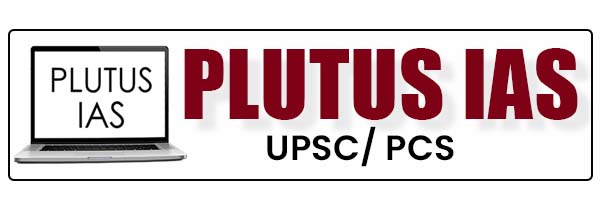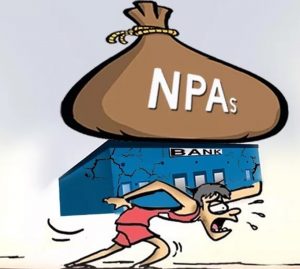17 Sep NPA mess and the creation of Bad Bank……(GS 3, Economics, The hindu, The Indian Express)
Context: Commercial banks especially the Public Sector Banks (PSBs) are facing the huge problem of NPA. Due to this Balance sheets of these banks are not looking promising and they are finding difficulties in furthering their banking business. The government for long trying to solve this problem and recapitalized these banks a few times earlier, still the problem of NPA has not gone off. This time the Government is creating a Bad Bank in the name National Asset Reconstruction Company Limited (NARCL). Let’s understand whether this is the real and ultimate solution…..
News: “The Cabinet on Wednesday cleared a ₹30,600-crore guarantee program for securities to be issued by the newly incorporated ‘bad bank’ for taking over and resolving non-performing assets (NPAs) amounting to ₹2 lakh crore. A 15% cash payment would be made to the banks based on some valuation and the rest will be given as security receipts.”
Let’s understand this, first, the NPA itself – The Non Performing Assets is abbreviated as NPA. When the banks give money to borrowers as loans, the banks write these loans as assets in their balance sheets (The balance sheet shows the assets and liabilities of any company or bank). These loans will be said as performing if the borrower is repaying the loan amount back to the bank including interests as per the agreement. Now say if the borrower is unable to repay the loan amount or the interest, which will be generally in the form of EMI, then the loan (which is an asset of the bank) will be said as non-performing. And now Banks will not write these loans as assets in their balance sheet but as Non-Performing Assets (NPAs). As per RBI rules, loans should be written as NPAs if the borrower is unable to pay the principal amount or interest for 90 days after borrowing or kept 90 days gap in between. It means from the 91st day onward banks have to write loans as NPAs. Now if there is 90 days gap in repayment, there will be fear whether those loans will be returned back. The fear will increase with the increasing gap and accordingly these loans will be renamed as Substandard Assets (90 days + 1 year), Doubtful Assets (90days + 1 year + 1 year), Loss assets (Non collectible) etc. All these could be said as NPAs as all are having at least 90 days gap in repayment.
Now if the banks are having huge NPAs in their balance sheet, it will be difficult for them to do banking business. Investors will not invest further in banks, Creditors will not lend further to banks and the most important depositors will also defer their deposit in such banks as all these stakeholders are in a fear that banks will lend their invested, lent or deposited money irresponsibly to anyone. And ultimately it will be a loss of the said stakeholders. It means once the bank is unable to get the money from the market to lend, its business is gone. Because the bank’s ultimate business is nothing but to get money from someone and lend it to someone.
As of 31st March 2020, The Gross NPA of Public Sector Banks (PSBs) is 6.7 Lakh Cr. and the Net NPA is 2.3 Lakh Cr. as per RBI
The Government has set up a Bad Bank (also said as Asset Reconstruction Company) in the name of National Asset Reconstruction Company Limited (NARCL) and decided to give it ₹30,600-crore, which is coming as nearly 15% of Net NPA of PSBs. The NARCL will use this money to buy NPA from PSBs. Supposedly any Pubic Sector Bank has ₹100 as its Net NPA. The NARCL will give ₹15 (cash) to the Bank and for the rest ₹85 value, Security Receipts will be given. Now, look into the Bank’s balance sheet after this transaction. Bank will write cash worth ₹15 and Security Receipts worth ₹85 in its balance sheet which was earlier written as NPA worth ₹100. Now it will be the responsibility of NARCL to collect that ₹85 from the defaulted borrower of the bank and give it to bank against the Security Receipt it had issued earlier. At the same time this Security Receipt will be guaranteed by the government. It means if the NARCL will be unable to get the money (₹85 in this example) from the defaulted borrower (either by getting money directly or by Resolving means selling the business as a whole of the defaulted borrower or by Liquidation means selling the collateral/mortgaged assets separately of the defaulted borrower, many times it is a company), the government will give the money (₹85 in this example) from its pocket/budget.
This is how the government cleared a ₹30,600-crore guarantee programme for securities to be issued by the newly incorporated ‘bad bank’ for taking over and resolving non-performing assets (NPAs) amounting to ₹2 lakh crore.
Under the proposed mechanism, the NARCL will acquire assets by making an offer to the lead bank. Private sector asset reconstruction (ARCs) firms may also be allowed to outbid the NARCL. Separately, public and private lenders will combine forces to set up an India Debt Resolution Company (IDRC) that will manage these assets and try to raise their value for final resolution.
Public sector banks will have a 51% ownership in the NARCL, while their shareholding along with that of public sector financial institutions will be capped at 49% for the IDRC, with private lenders bringing in the rest of the equity capital.
Challenges Ahead: Now it all depends on NARCL whether it could resolve these NPAs in a time-bound manner, otherwise critics will say that the problem of the government is not ultimately solved rather moved from one hand to another that is from PSBs to NARCL. But the PSBs will be able to get the trust of the market once again for sure.
Md Layeeque Azam, Economics Faculty
Plutus IAS Daily Current Affairs 17th September 2021
Plutus IAS Current Affair Team Member




No Comments